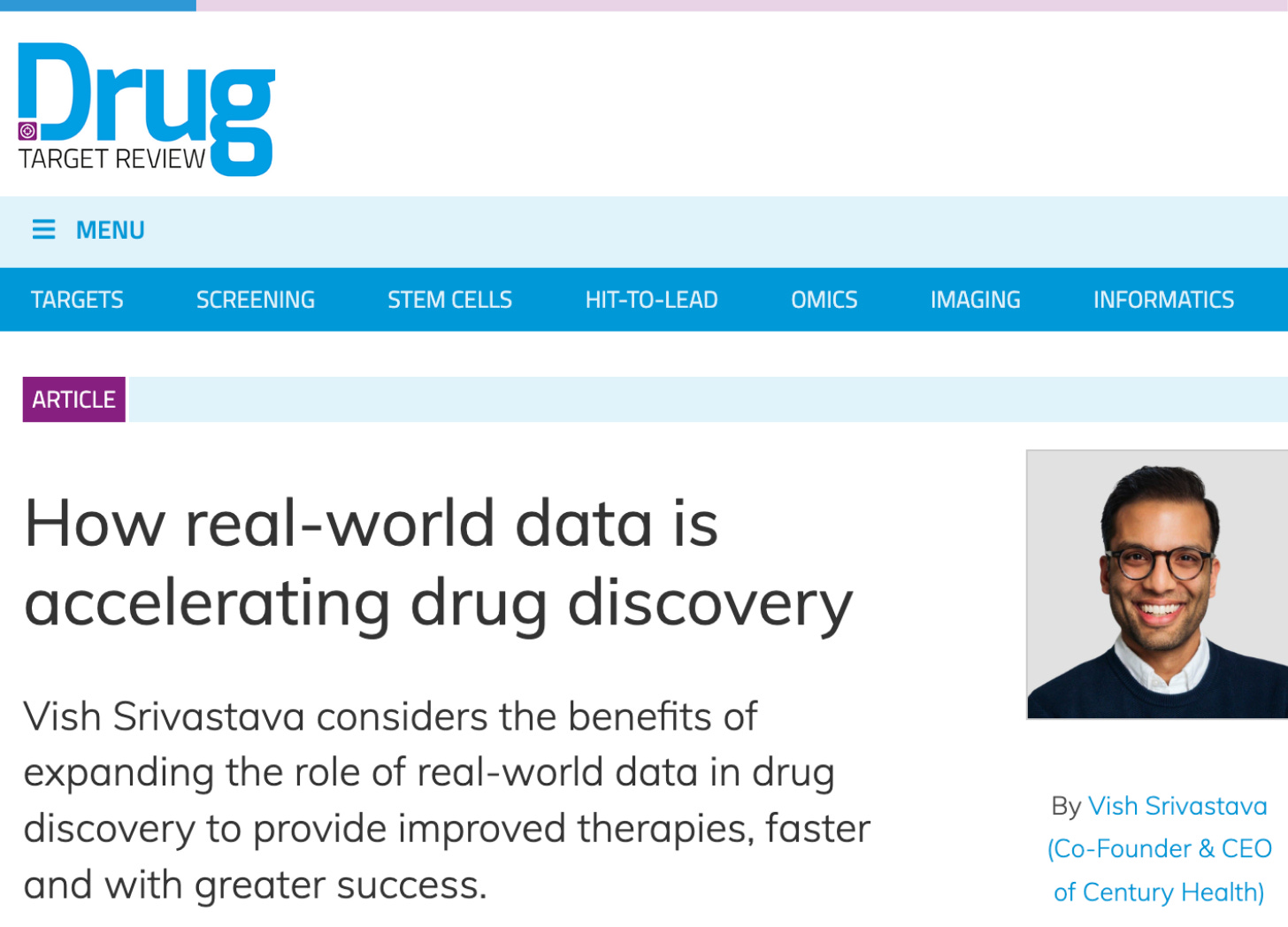Bringing the Real World Into the Lab: Century Health CEO on Why Early-Stage R&D Needs Real-World Data
Century Health accelerates drug development and commercialization by applying cutting edge LLMs to messy longitudinal clinical data.
Drug discovery doesn’t fail for lack of science, it often fails for lack of relevance. That’s the message from Century Health CEO Vish Srivastava in his recent Drug Target Review article, where he makes the case for integrating real-world data (RWD) far earlier in the R&D pipeline.
Srivastava argues that the biology observed in labs and clinical trials is often too narrow to reflect the messiness of real-life patients—those with comorbidities, inconsistent medication use, and a mix of environmental and socioeconomic factors that influence disease progression. By pulling from rich RWD sources like longitudinal electronic health records, imaging, and unstructured clinical notes, researchers can validate drug targets more effectively, identify real therapeutic gaps, and fine-tune trial design long before Phase I begins.
Why Now? AI Is Making RWD Fit for Early-Stage Use
Historically, RWD was relegated to post-market safety and reimbursement studies. But with AI now able to parse free-text clinical notes, stitch together lab reports across systems, and harmonize imaging data, the real world is finally structured enough to be useful during preclinical research.
This shift is opening doors to:
More accurate biomarker validation by correlating lab values with long-term outcomes
Identification of subpopulations that are underserved by current therapies
More inclusive trial design, informed by patients who exist beyond traditional inclusion criteria
As Srivastava notes, platforms built with both scientific and clinical questions in mind, like those at Century Health, are creating disease-specific registries that go beyond claims data and provide the depth needed for translational work.
From Theory to Impact
In respiratory disease areas like COPD and asthma, where patient trajectories vary wildly, RWD can surface unexpected responders, natural disease courses, and unrecognized treatment effects. That insight not only sharpens the science—it improves the odds of clinical and commercial success.
“Drug discovery will always require the controlled precision of the lab,” Srivastava writes, “but relying solely on experimental models and published studies leaves valuable insights untapped.”
By bridging the gap between discovery and the real world, Srivastava believes the next wave of therapies can arrive faster and land more squarely in the lives they aim to improve.
Read the full piece in Drug Target Review
Listen to Laura McDonald with Scott Hartley on the Venture Everywhere podcast: Fertility in Full FLORA. Now on Apple & Spotify. Check out to all our past episodes here!


